
Looking for a 4x4 touring adventure that combines stunning natural landscapes, remote tracks, crystal-clear waters of the Great Barrier Reef and the spectacular Outback?
Look no further than a North Queensland road trip.
JUMP AHEAD
- Tropical North Queensland: Cairns to Cape York
- Outback Queensland: Australian Dinosaur Trail
- Townsville: North Queensland highlights
- Best of The Whitsundays
- Mackay Isaac Region: Reef to Rainforest

Tropical North Queensland: Cairns to Cape York
If you're a 4x4 tourer, Cape York is more than likely at the very top of your adventure bucket-list.
This amazing journey will take you through some of the most rugged and stunning terrain in Australia, including the Bloomfield Track and the Old Telegraph Track, while also offering the chance to experience the region’s rich Indigenous culture and check out some amazing historic sites.
You need to be an experienced 4x4 tourer for this one, with a fully kitted-out rig and be ready to have your driving skills tested (and have some cracking fun) on this 1432km one-way epic.
You will negotiate river crossings, rocky terrain, steep inclines, and magical sandy beaches, while exploring the remote and beautiful landscapes of the Cape York Peninsula, Australia’s northernmost point. Yep, there are many reasons why it’s regarded as not only one of the best 4x4 adventures in Oz, but the world.
See our Top 5 4WD Road Trip Tips at the end of this yarn to make sure you’re fully prepared for a memorable adventure. Jump ahead here!
Starting at Cairns, the ‘trip to The Tip’ visits remote Aboriginal communities, historical sites, and scenic coastal areas, with some of Australia’s best camping along the way.
To ease your way into the trip – and to make effective time from Cairns to Cooktown (known as the ‘gateway’ to the Cape), head inland to the Atherton Tablelands, and join the Mulligan Highway. It’s a cruisy four-hour drive if you’re keen to get straight to Cooktown, but if not, take advantage of the side-trips along the way, with bird viewing, rock art (at Laura) and the chance to check out Kalkajaka (Black Mountain) National Park’s namesake large black boulders that dominate the landscape.
For keen anglers, the turn-off to Archer Point (17km south of Cooktown) will take you to one of the best fishing locations on Australia’s east coast.
For those after a more remote journey north, and one that’ll put your rig and yourself to a sterner test, you can opt for two 4x4-only routes, instead: the Bloomfield Track (accessed via Cape Tribulation) which is quite close to the coastline, or the challenge of the CREB Track, which starts at Daintree and takes you over the McDowall Range.
The Bloomfield Track, at 30km, is a brilliant off-road experience and sampler for what lies ahead for travellers.
Originally an Indigenous footpath, then an old miner’s packhorse route, the Bloomfield Track takes you through spectacular rainforest, with a number of creek crossings (some now with concrete bases, some with bridges, and some without) and steep climbs and descents to tackle along the way.
The CREB Track (60km) is more challenging than the Bloomfield, and it sees you follow red-clay tracks through the Wet Tropics Workd Heritage area’s deep rainforest and steep terrain (rain can affect track conditions here, so always check it’s open before attempting this route) but it rewards you with a fantastic sense of remoteness and adventure.
The views from this track’s high points – across the magical tropical rainforest and mountains – are simply awesome. Roaring Meg Falls is another highlight of this drive, as is camping at Yindilli camping area.
Both of these routes link to Shiptons Flat Road and then, further north, this road ends at the sealed bitumen of the Mulligan Highway on to Cooktown.
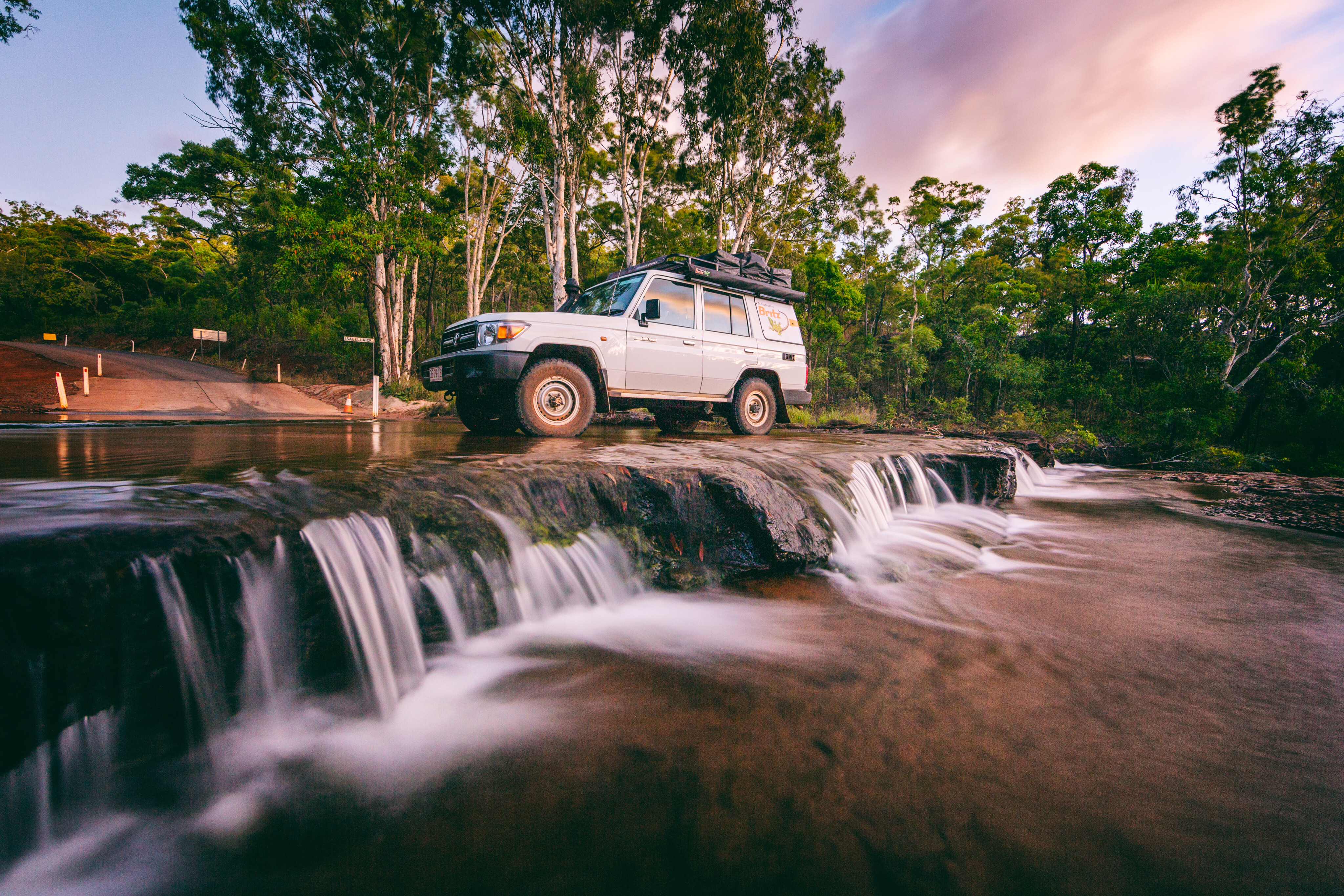
After a day in Cooktown, it’s time to continue north toward Hope Vale (if you have time, take the must-do off-road side-trip to pretty Elim Beach and its Coloured Sands, where you can drive your 4x4 on the beach at low tide – it’s a brilliant experience) and then it's on to Cape York’s largest (and Queensland’s second largest) national park, Rinyirru (Lakefield).
There is plenty of awesome camping here (for a remote camp experience, check out Old Faithful and 12 Mile Waterhole, on the Normanby River) and, again, some cracking fishing spots. Make the most of your time here before continuing to Coen, via primarily dirt roads through the national park, before joining the Peninsula Development Road (PDR) at Musgrave Roadhouse for the final leg to Coen itself.
From Coen you continue north and then, after chowing down on some tasty food at Archer River Roadhouse, you can opt for a side-trip along Portland Road to Kutini-Payamu (Iron Range National Park) or continue northward along the PDR to another junction where, if going straight ahead, you will reach the west coast community of Weipa.
For those continuing north, you have reached the start of the mighty Telegraph Road, considered the most famous (and challenging) part of this journey and one where a fully-prepped rig is a must. While this ‘road’ follows the original route of the Old Telegraph Track (OTT), it has been upgraded to a degree, with some (not all) rivers, such as the Wenlock, now bridged.
Even with some ‘modernisation’, the OTT remains a fun challenge for 4x4 tourers. Each year, the many creek crossings can change, although there are detours around some of the most challenging sections.
Highlights include the (in)famous Gunshot Creek crossing in the track’s southern section, where vehicles get nearly vertical as they enter the water, the long, deep crossing near Fruit Bat Falls and, further north in Jardine National Park, the chance to swim at magic Eliot or Twin Falls (there is nice camping at Eliot Falls, with the chance to relive the adventure around a campfire that night). Indian Head Falls is worth more than a day’s camp, too.
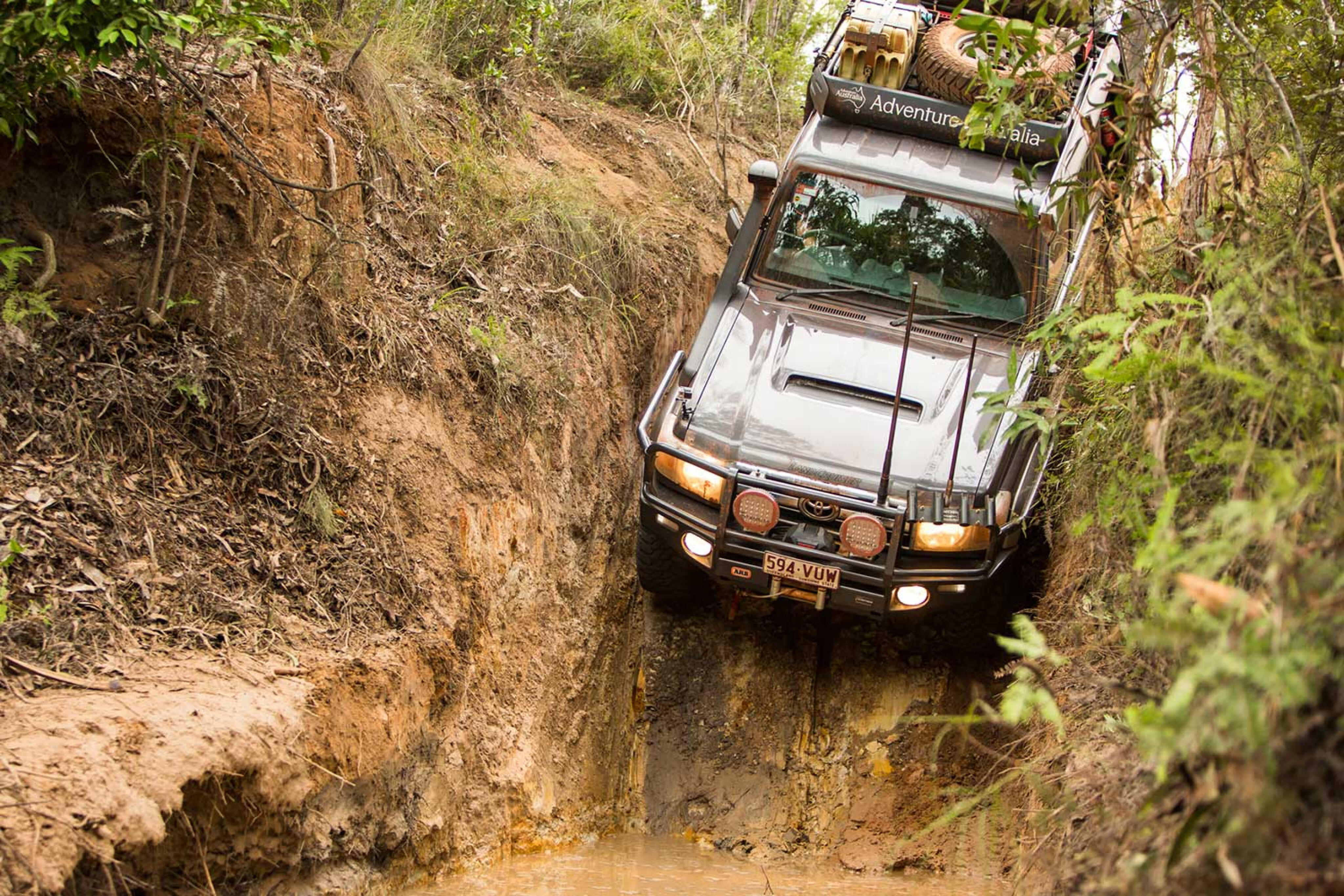
From Twin Falls camping area it’s around a 60km trek (fording several creeks along the way) before you reach the ferry crossing of the Jardine River itself. Once across this mighty waterway, it is another 48km to Seisia, the popular fishing town on the peninsula’s west coast, before the short 34km push on to the tip of Australia and its famous sign, which is reached via a 20-minute walk from the car park.
As you’re reading that sign’s message (“You are standing at the most northern point of the Australian continent”) just think you get to experience it again on the return journey. Speaking of which, most travellers take a different route south, so you allow for that in your trip-plan – you really don’t want to rush your time in this spectacular part of Australia.
For more, see drivenorthqueensland.com.au [↗]
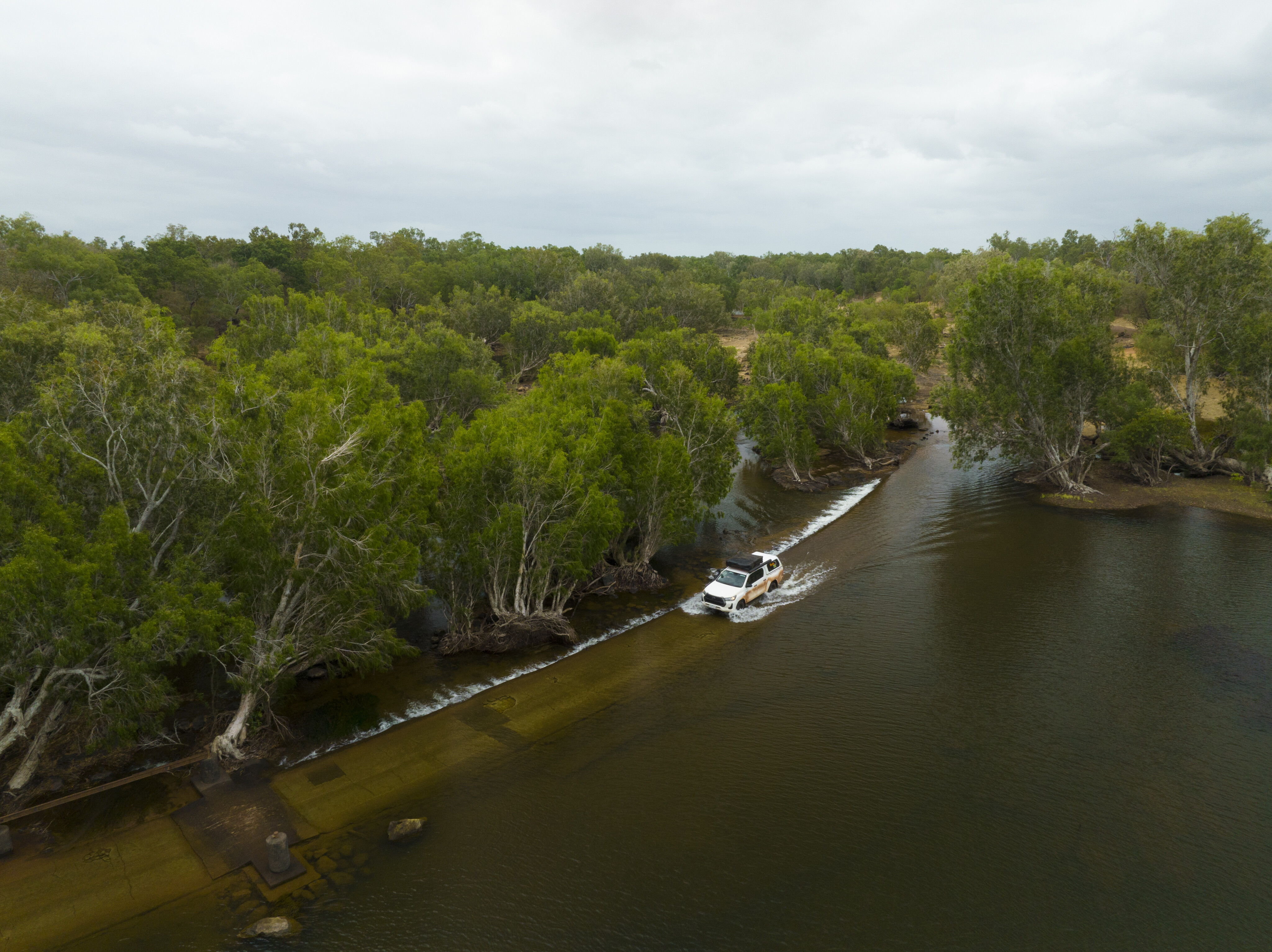
Quote from 4X4 Australia writer/photographer Kev Smith
“For me, the Gulf region of North Queensland always has a place in my heart. From the sheer diversity of landscapes – the massive salt pans in the north to the harsh rocky areas to the southern gulf – there’s just so much to see and do. Then there’s the amazing and often heartbreaking history that can be found all through the area where relics have been left behind.
“When the wet weather passes through, the wide rivers flood, leaving behind a trail of destruction but also giving life to the Gulf region. I find prepping and travelling these remote areas a joy, plus exploring the wide range of 4WD roads and tracks that lead into vast and isolated areas discovering what used to be. Often an underestimated region, the Gulf has more to offer than most people realise.” – Kev Smith
Outback Queensland: Australian Dinosaur Trail
For those looking to combine a big 4x4 touring experience with – yep – a dinosaur hunt, the Australian Dinosaur Trail, in Outback Queensland is an absolute belter.
Along this route, you will experience some of the region’s most ruggedly stunning terrain, including Porcupine Gorge.
For adventure-seekers, this trail takes you on a journey through time as you explore the ancient landscapes where some of the world's largest dinosaurs once roamed. It’s not a challenging drive, with relatively easy driving on sealed outback roads, Again, a SUV or 4x4 will see you making the most of this spectacular part of Oz.
There are four parts to the trail; two are located near Winton, which is 1150km west of Brisbane, and the other two are farther north at Richmond and Hughenden.
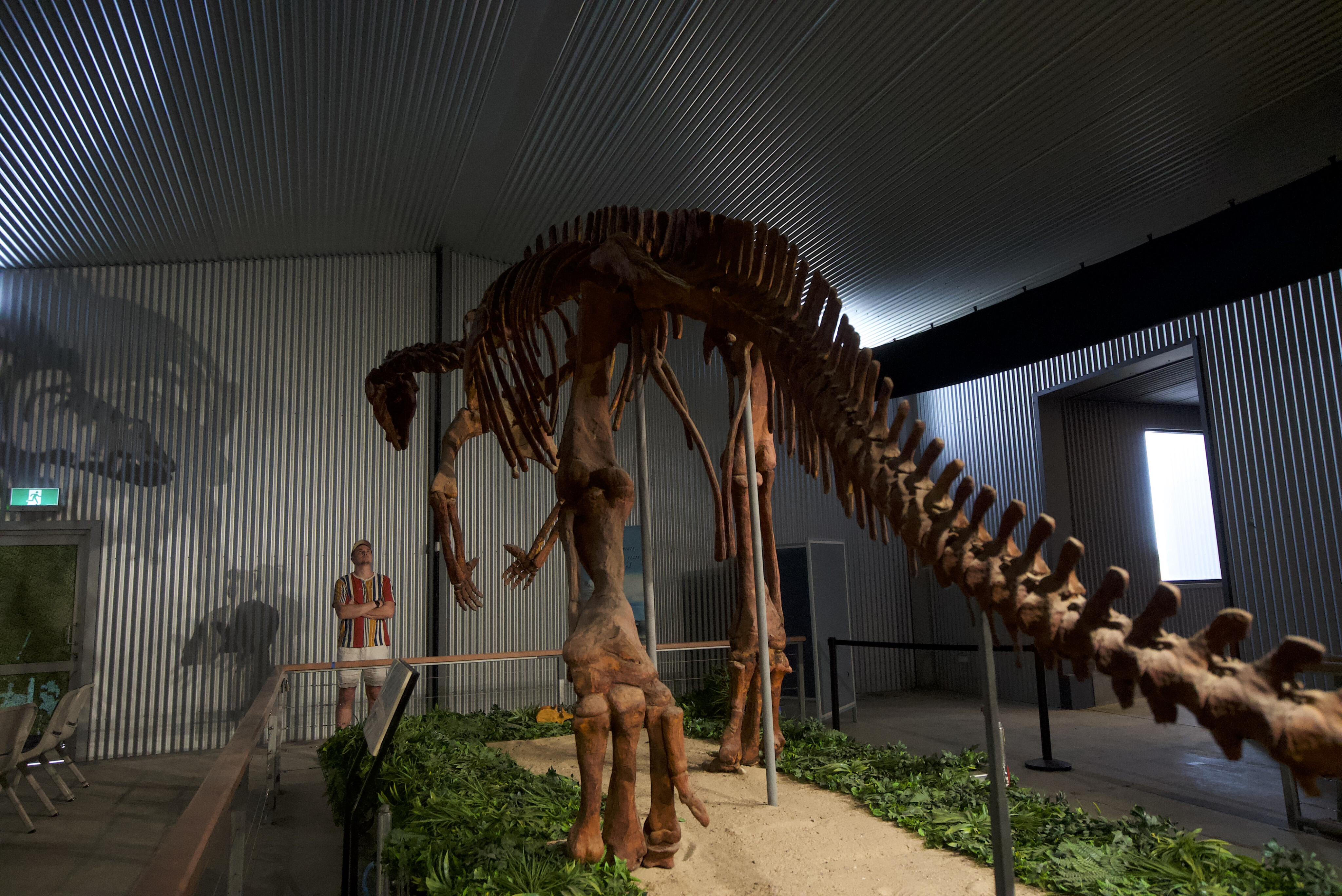
Head to Hughenden to check out ‘Hughie’, a Muttaburrasaurus fossil (and resident of the Flinders Discovery Centre) and then tackle a 54km side-trip to magical Kooroorinya Falls Nature Reserve.
An overnight in Hughenden also allows for plenty of time the next day to visit Porcupine Gorge National Park (the 1.2km walk to the gorge base is a must-do; you can also camp in the park) and, after tackling some of the region’s 4x4 tracks, taking the 115km drive to Richmond.
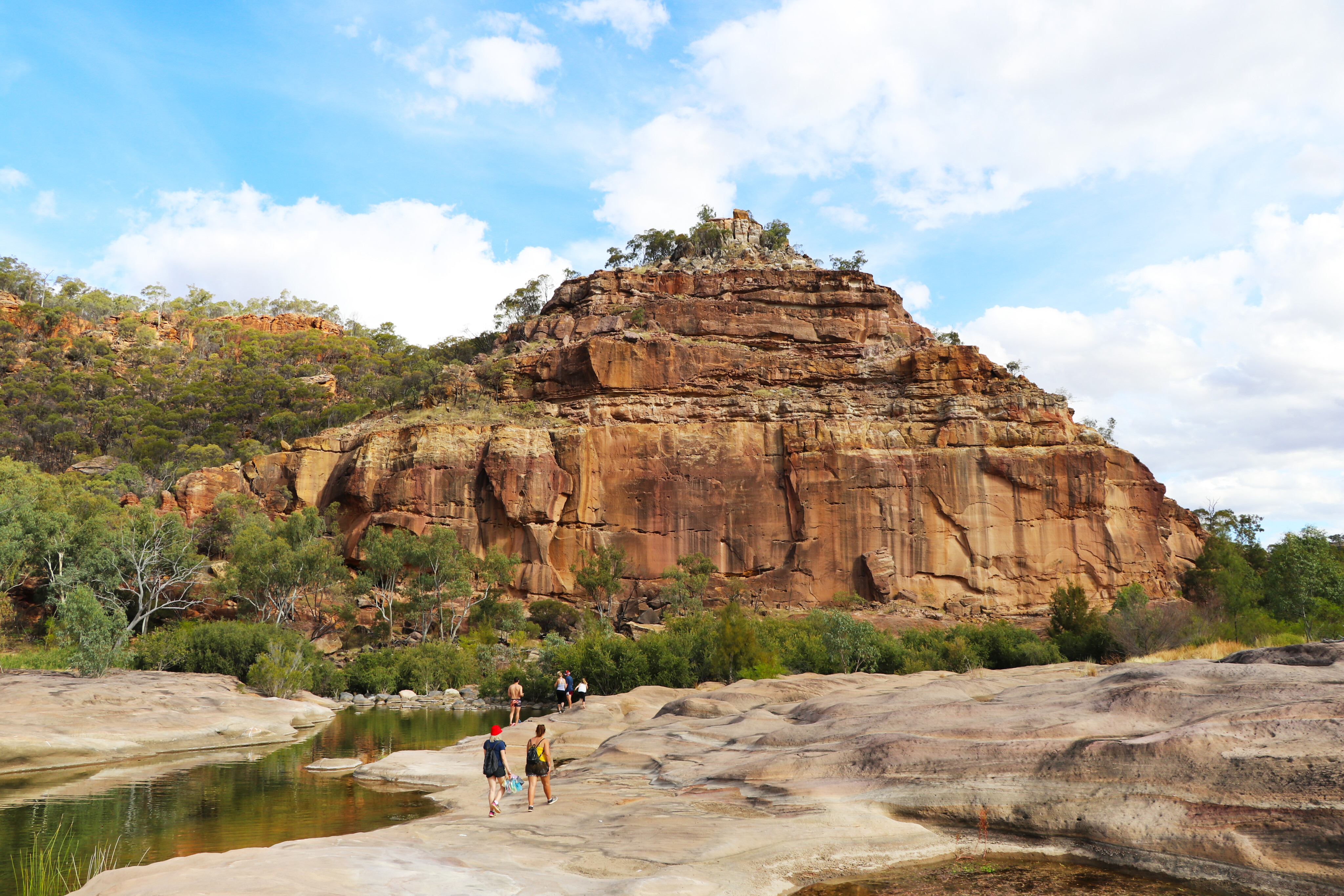
Here, you will find the awesome Kronosaurus Korner, containing Australia’s premier collection of marine fossils, and including ‘Penny’, the country’s most complete marine vertebrate specimen.
There’s a Heritage Walk around town, too, and the option of taking a dip in Lake Fred Tritton.
The Dinosaur Stampede National Monument, about 110km south-west of Winton, is home to the Lark Quarry Dinosaur Trackways; another must-visit on the Dinosaur Trail.
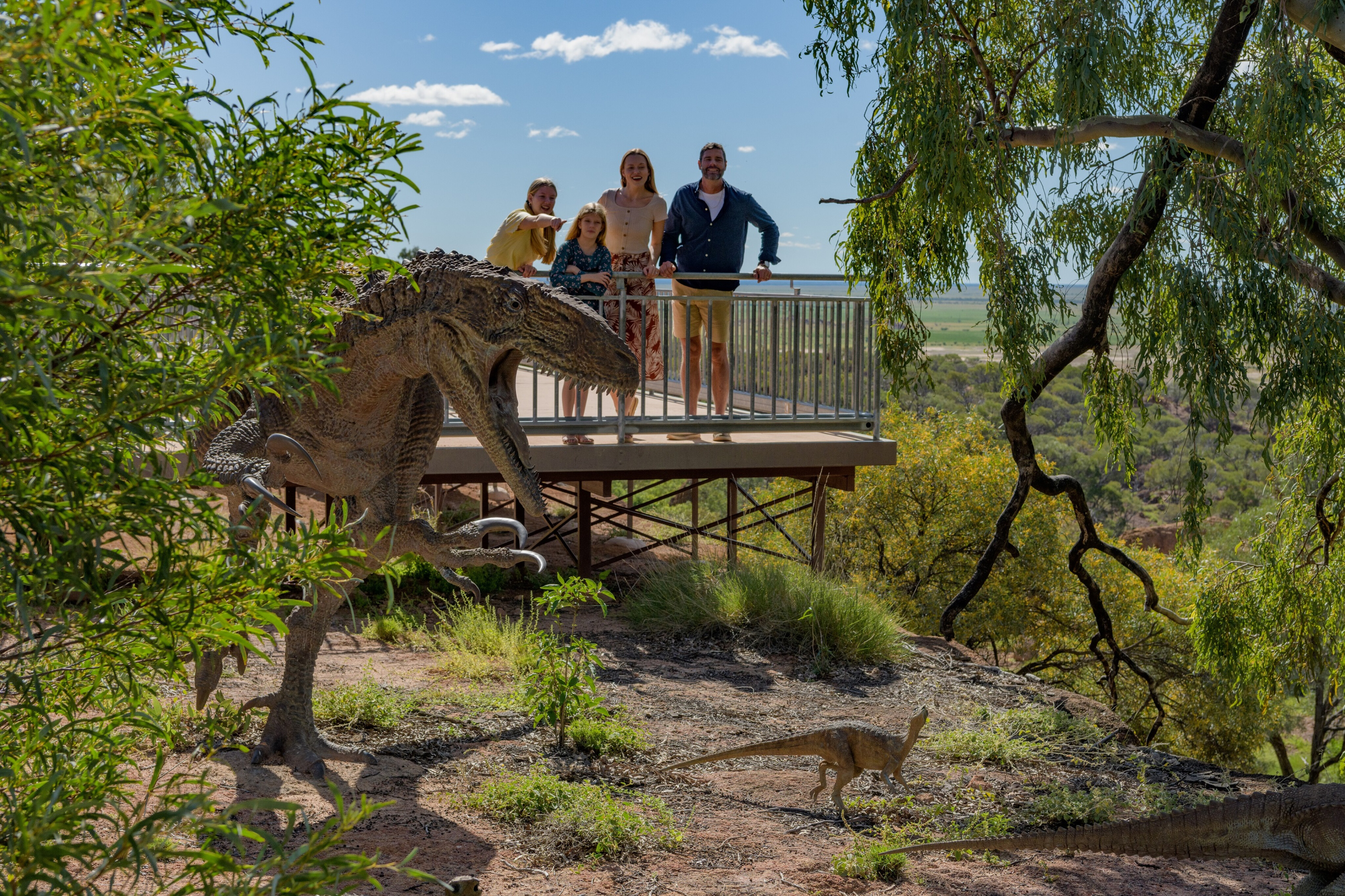
Located only a few kilometres off the main road, it's the only place in Australia where evidence of a dinosaur stampede has been discovered.
Here, you can see impressions of dinosaur footprints in mud from a stampede that occurred an estimated 95 million years ago.
Once inside, there’s a short video on how scientists think the stampede occurred, and then you’re taken inside a specially built shed where you can view the footprints in the dried mud. Volunteers run the show out here and share a wealth of information on this area and anything to do with the stampede.
The final stop on the Dinosaur Trail is the Australian Age of Dinosaurs Museum, located 25km south-east of Winton and has the largest display of Aussie dinosaur bones in the world, plus you can check out the lab where bones are cleaned for display.
Make sure you allow at least half a day here, as there’s lots to see and do, including a wander through the Dinosaur Canyon, join an interactive guided museum tour, and take in the March of the Titanosaurs exhibition. And don’t miss a visit to the café and museum shop.
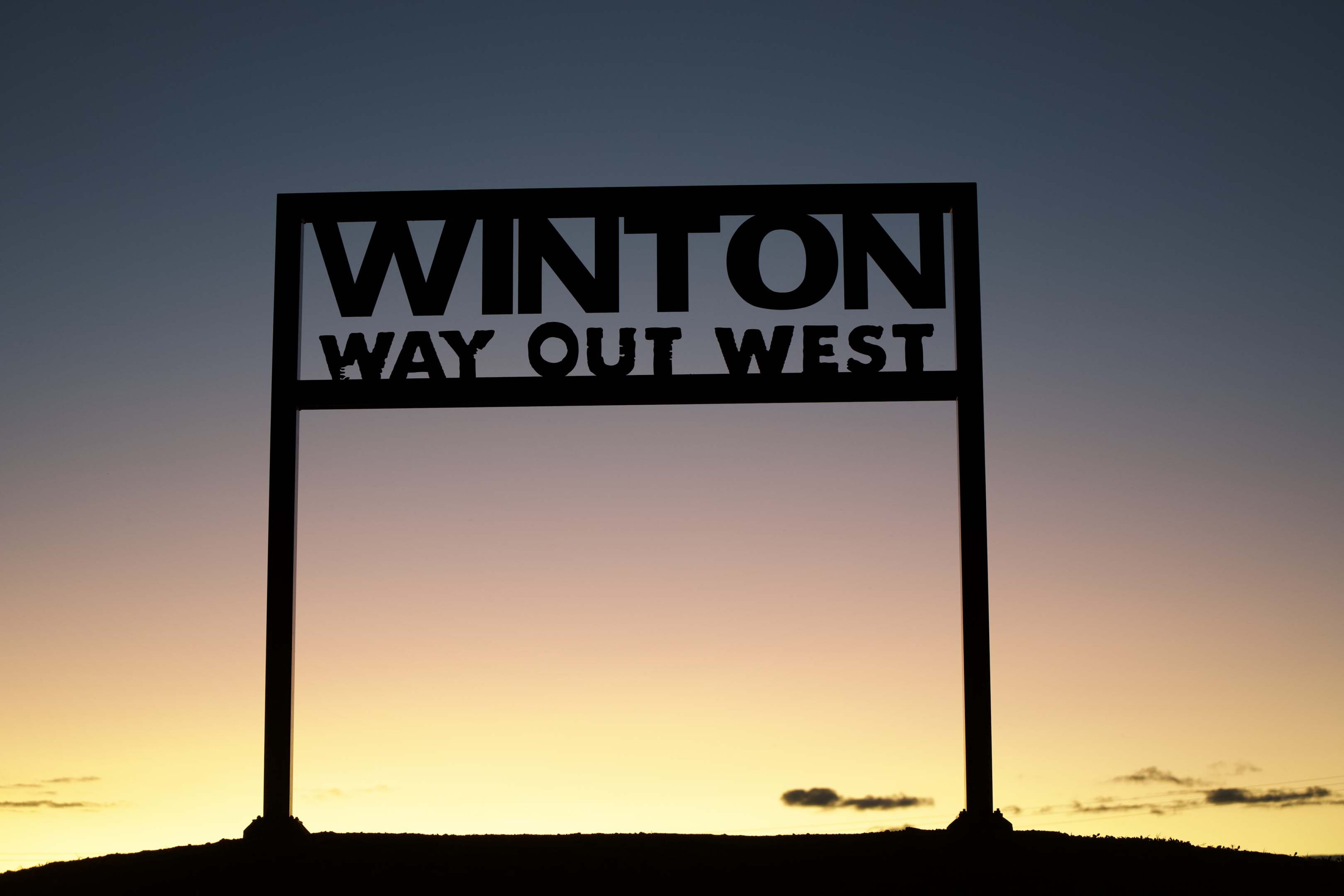
The entire trip is doable with a camper trailer, but you’ll need to be prepared for a good 400km of outback roads that rarely see maintenance. Believe us, it’s worth it!
For more, see drivenorthqueensland.com.au [↗]

Townsville: North Queensland highlights
The North Queensland Highlights adventure begins with a visit to the Burdekin region, known for its sugar cane and fishing locations.
Ayr and Home Hill, the two main towns of the region, are separated by the Burdekin River and connected by the Silver Link, a 1km-long bridge.
The area is great for fishing, and visitors can take a scuba diving trip with Yongala Dive to the famous SS Yongala, one of the best shipwreck dives in the world.
Townsville, the largest regional city in Northern Australia, is the next destination and is an ideal base for 4x4 enthusiasts seeking to explore the rugged terrain and stunning scenery of North Queensland. It's the gateway to some of the most exciting off-road adventures in the region, from the challenging tracks of Paluma Range National Park to the beautiful remote roads of Magnetic Island.

Townsville is also home to several 4x4 clubs and groups, making it easy for enthusiasts to connect with like-minded individuals, share tips and tricks, and explore new trails together.
Proper preparation and equipment are crucial for safe off-road adventures. So, whether you're an experienced off-road veteran or a newcomer looking to get started, Townsville has everything for your 4x4 adventure.
The city is nothing if not vibrant, with museums, galleries, and cultural events. After a long day on the tracks, unwind in the bustling nightlife and enjoy the city's restaurants and cafes. For those keen to learn more about the region’s native wildlife, check out Billabong Sanctuary, with its resident native animals, such as koalas, wombats, dingoes, and snakes – and home to mainland Queensland’s largest captive croc - Krakatoa, who measures an impressive 5.1 metres in length!
In the centre of town, visitors can find the Museum of Tropical Queensland, which offers a chance to see and learn about the region’s amazing sea life and artefacts, as well as its rich Indigenous culture (you can join the Walking Through a Songline immersive experience to learn more). If history is your thing – be sure to take a walk through the Jezzine Barracks parklands, featuring military fortifications, artistic sculpture trails, and traditional custodian bush tukka trails.
Magnetic Island, just 20 minutes away from Townsville's city centre by SeaLink Queensland or Magnetic Island Ferries, is another must-visit. The island offers 23 beaches and bays to explore, which can be accessed by car or by hiring an island cruiser with one of the many car hire companies on the island.
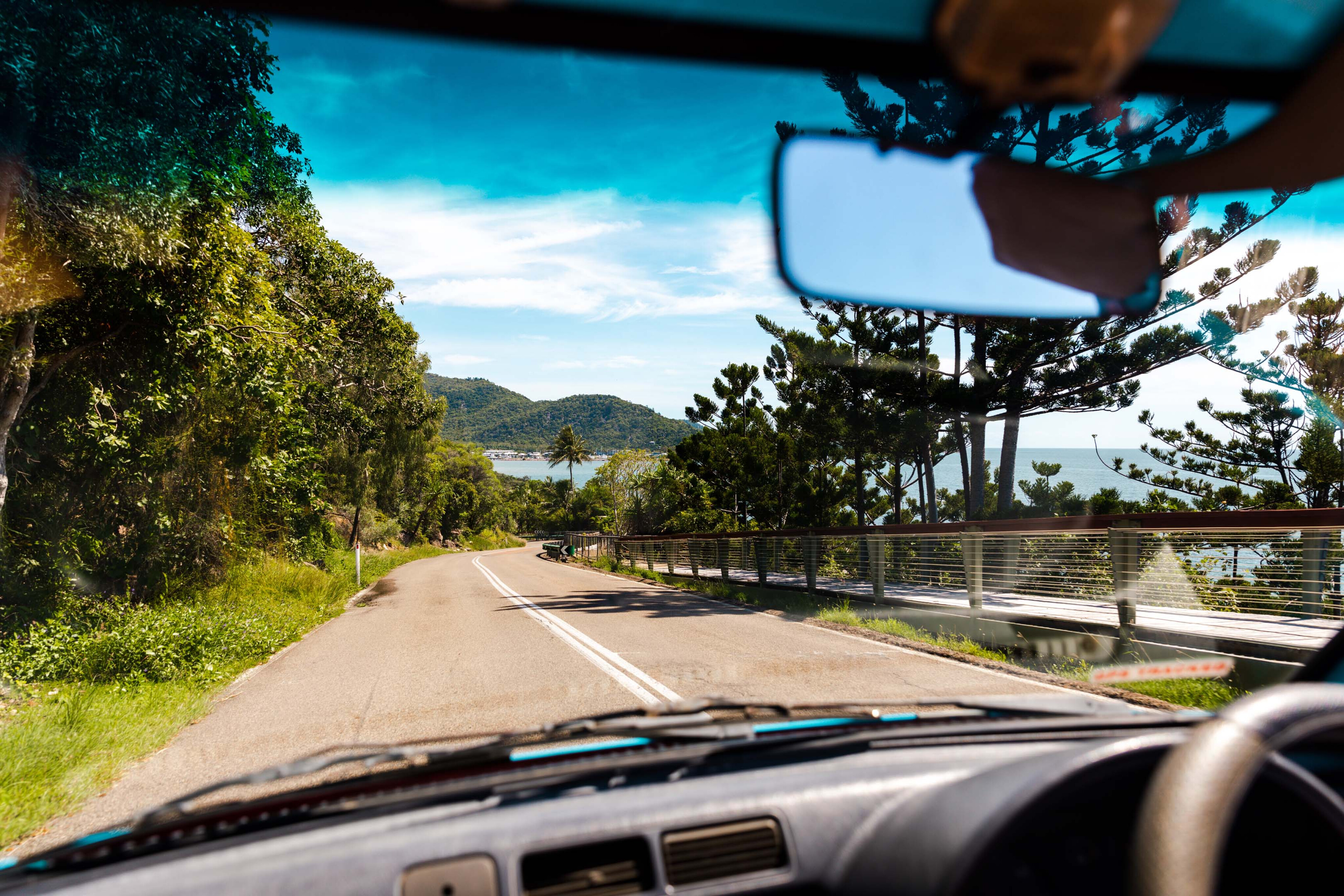
Visitors can also take a discovery tour with Aquascene Charters to access some of the most remote and exclusive beaches on the island.
The Forts Walk is a great place to spot wildlife – including some of Northern
Australia’s largest colony of wild koalas - and offers an excellent sunrise vantage point with 360 degree views.
From the sea, it’s a journey south-west from Townsville, to Charters Towers, the gateway to the mighty Outback. The contrast in the landscape as you travel to Charters Towers is amazing in itself, and the drive is more than well rewarded once you reach this former gold rush town’s magnificent heritage buildings – they are magnificent and it’s worth taking a big walk around town to check them out or, to really learn about what was once Queensland’s second biggest city, join a guided walking tour.
Don’t miss sunset at Towers Hill, an absolute belter way to finish a day exploring the town. Add in a trip out to nearby Leahton Park (home to Australia’s largest herd of Texas Longhorn cattle) to check out ‘JR’, the former Guinness World Record holder for a horned steer with his immense 3.1-metre wide horns. Yep, impressive!
From the Outback, it’s a return to North Queensland’s iconic Tropics, with Ingham the final stop on this mighty adventure.
An exciting way to return to the coast from Charters Towers is via the Gregory Developmental Road (a mix of sealed and unsealed surfaces) that will take you through the pretty Herveys Range.
Once you’re back on the coast at Ingham, you’re on the southern doorstep of the Wet Tropics World Heritage-listed rainforest, and a short trip out of town to Wallaman Falls (at 268m, Australia’s highest sheer drop waterfall), or a visit to the excellent TYTO Wetlands Information Centre is a great way to finish this road trip.
Oh, and for the keen bushwalkers or kayakers, Hinchinbrook Island, north-east of Ingham, beckons with its famous Thorsborne Trail multi-day walk, or a day (or more) paddling around parts of the island.
For more, see drivenorthqueensland.com.au [↗]
Best of The Whitsundays
Take a journey through paradise with this itinerary, exploring everything from hidden beaches and well-kept secret spots to the iconic Whitsundays highlights.
From the stunning coastline to the rugged interior, there is something for every road-tripping enthusiast. Start your journey in the lively and picturesque Airlie Beach before heading out on a breath-taking adventure to Bowen. Enjoy scenic drives and panoramic ocean views as you make your way through rugged terrain. Keep your eyes peeled for wildlife and exotic birdlife along the way.
Proserpine
Head to the charming town of Proserpine, where you can venture out to explore Lake Proserpine, home to some huge barramundi (up to one metre in length) and serene lakeside camping.
Just 20 minutes from Proserpine, you will find the stunning Cedar Creek Falls. Cedar Creek Falls is a beautiful natural attraction, perfect for a day trip. The crystal-clear water below this towering waterfall makes it an ideal location for hiking, swimming, and picnicking. Accessing the falls is a breeze with a short bush track, ensuring a seamless experience to enjoy the refreshing water.
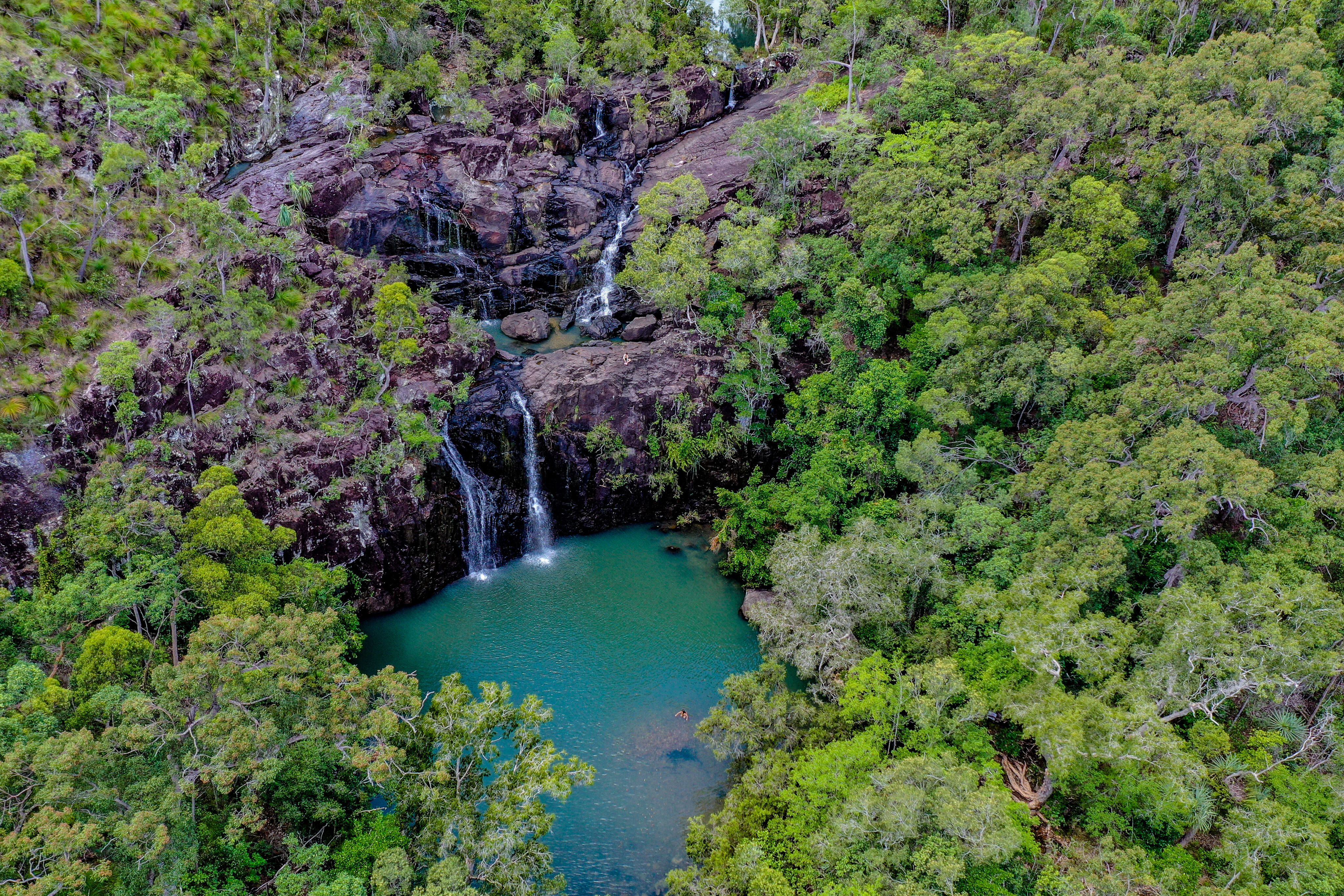
Proserpine is home to various agricultural activities, including the farming of sugarcane and cattle.
There are plenty of camping options in the area (including in nearby Conway National Park), enabling you to extend your adventure and spend a night under the stars.
Additionally, you can check out the Proserpine River and go croc-spotting! The Whitsunday Croc Safari will take you on a cruise along the river, and you can observe plenty of native wildlife in the nationally listed wetlands of Goorganga Plains.
Collinsville
No Whitsundays off-roading adventure is complete without a visit to Collinsville.
This historic mining town is surrounded by diverse terrain and offers endless opportunities for exploration. There is plenty to see and do, from the Collinsville Power Station to the Bowen River Hotel.
Collinsville is surrounded by jaw-dropping scenery, including the Bowen River, a popular fishing and camping spot. One of the best off-roading spots in Collinsville is the Collinsville Power Station, and the station is an abandoned industrial site, making it a popular spot to explore.
Another great spot is the Bowen River Hotel – a heritage listed pub from the 1800s, which offers a glimpse into the town's history and is a great place to stop for a cold drink.
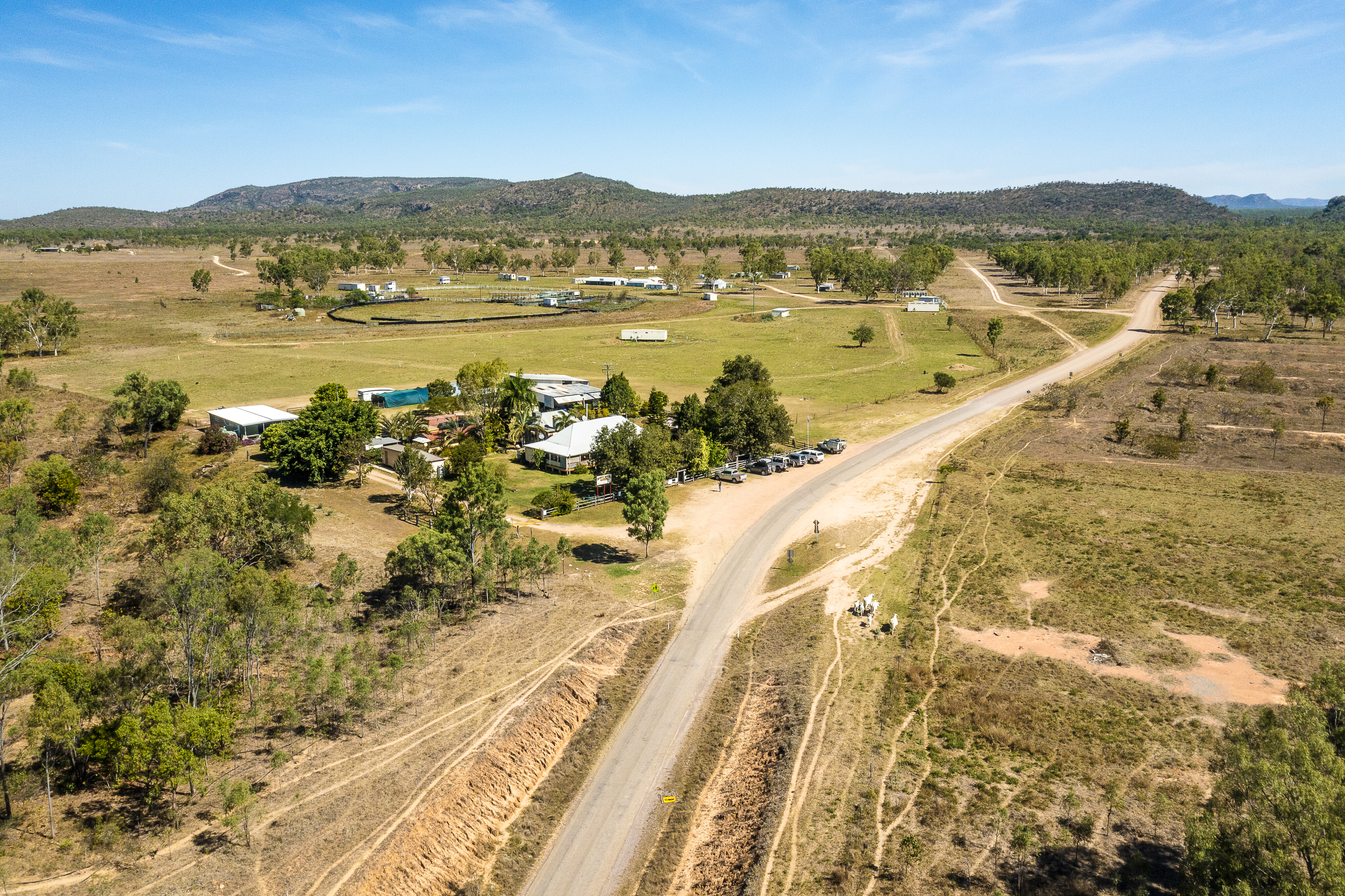
Bowen
Bowen is a beachcomber’s paradise, with eight spectacular beaches and stunning fringing reefs you can snorkel straight off the beach.
Follow the beachfront road to the iconic Horseshoe Bay, where you can enjoy panoramic ocean views and stunning sunsets. The Cape Edgecumbe Walking Trail, which begins at Horseshoe Bay, offers endless exploration of the region's natural beauty.
The Bowen hinterland is also a great place for 4x4 touring. Explore the rugged outback terrain and experience the region's unique flora and fauna. Head to Flagstaff Hill for stunning coastline views and the surrounding hills. Don't forget to stop by the Big Mango, a local landmark, and a great photo opportunity.
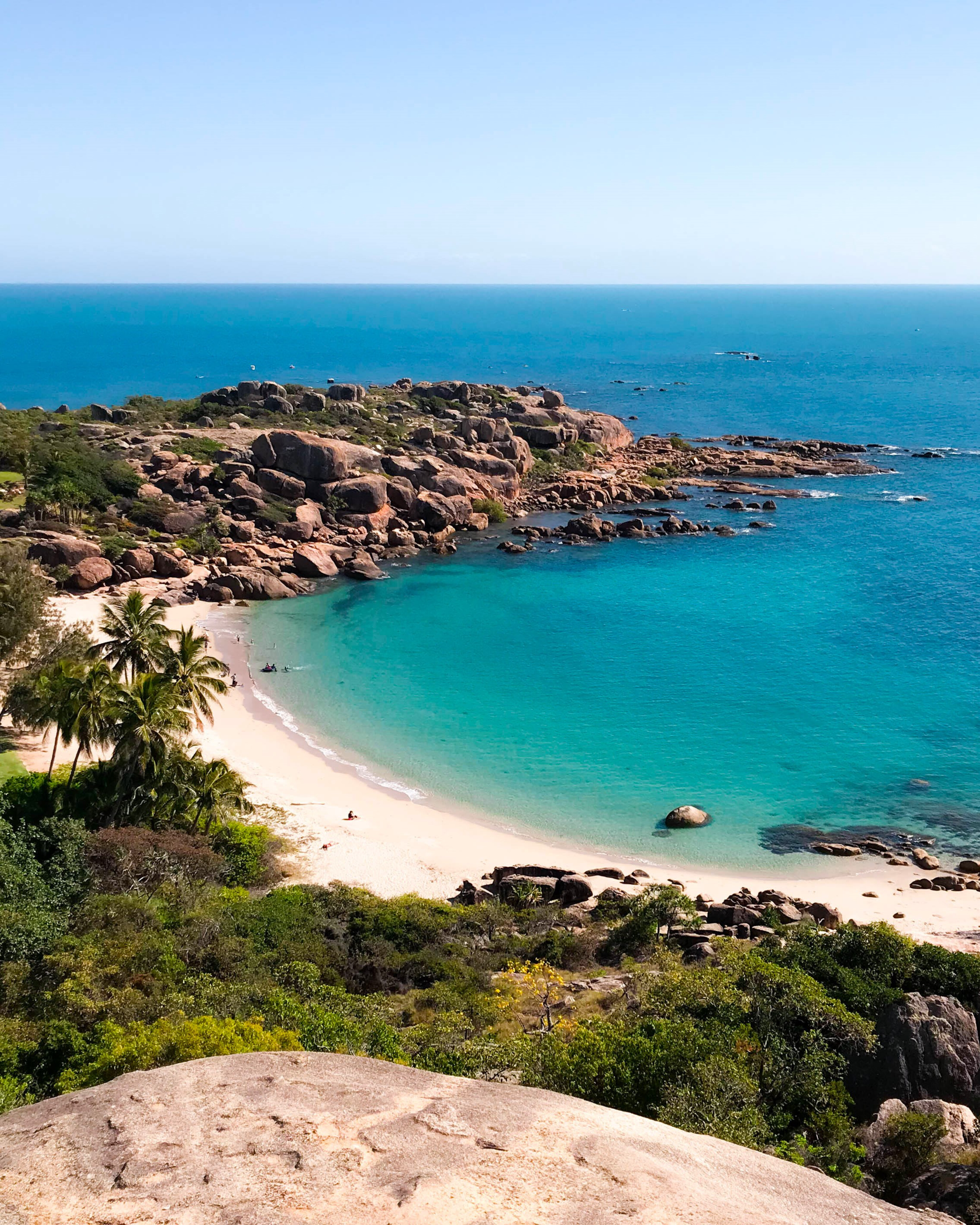
Hydeaway Bay
Hydeaway Bay is a hidden gem on the Whitsunday Coast that's ideal for an off-road adventure and home to several isolated and unspoiled beaches to explore.
The area is rich with native wildlife and stunning landscapes, providing a great place for adventure enthusiasts to explore. When you're ready to take a break, you can relax on the beach and watch the sunset over the ocean.
Hydeaway Bay and the sister town of Dingo Beach are great destinations for fishing enthusiasts, with plenty of offshore fishing spots. If you're looking for a relaxing off-road adventure, you can take a drive down the Cape Gloucester Road, which winds through the countryside and provides stunning views of the ocean and surrounding hills.
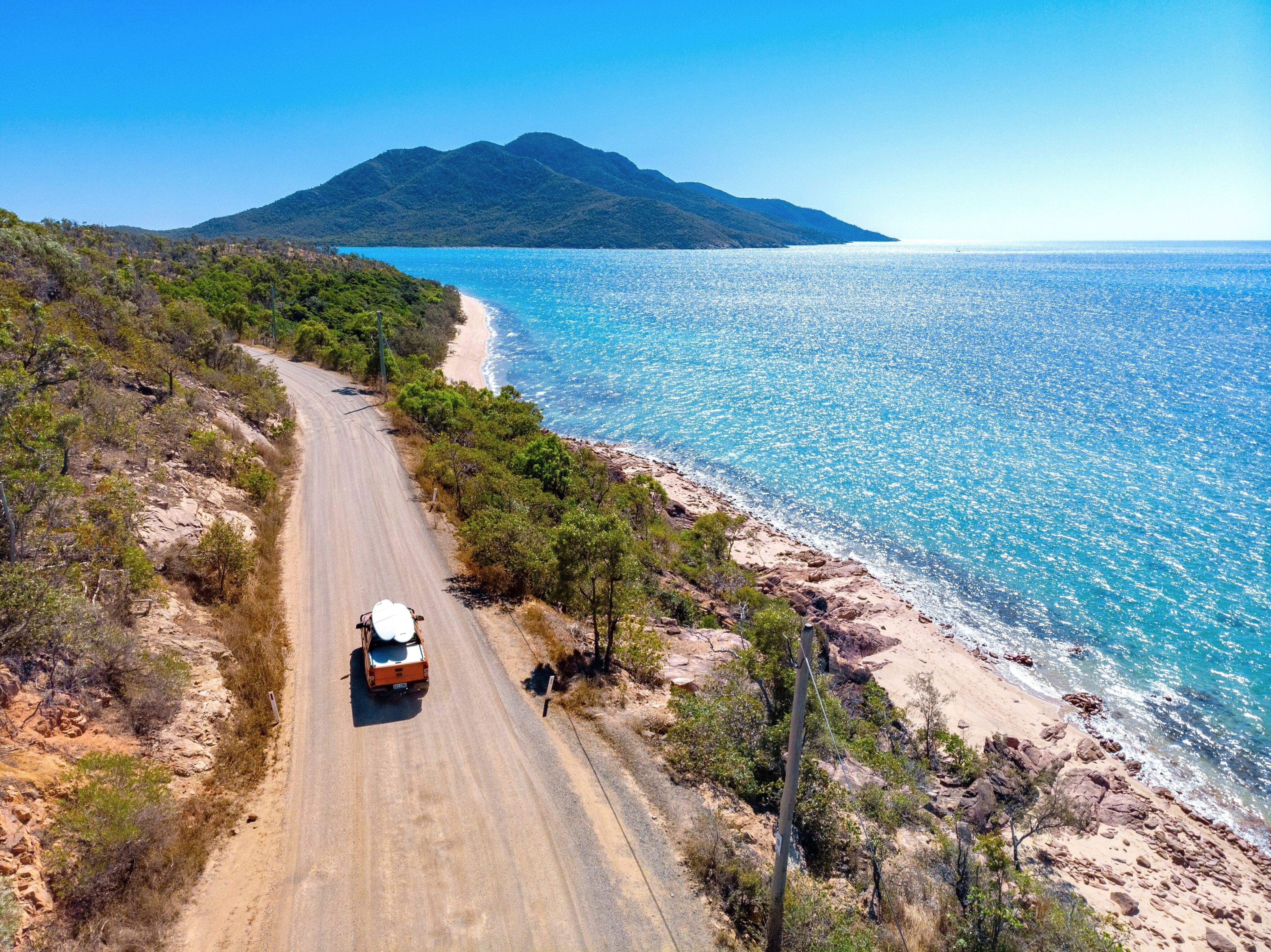
Airlie Beach
A great launchpad for water tours or personal exploring, Airlie Beach is a perfect location to experience the beauty of the Whitsunday Islands.
It is also from this mainland hub that you can access the surrounding regions and lush rainforests of the national parks.
If you’re keen to work up a sweat, hike through the Conway National Park on the Mount Rooper or Honeyeater Lookout tracks. If relaxing is more your style, check out the iconic Airlie Beach Lagoon or head to Boathaven Beach where you can while away the day watching the boats coming in and out of Airlie Beach.
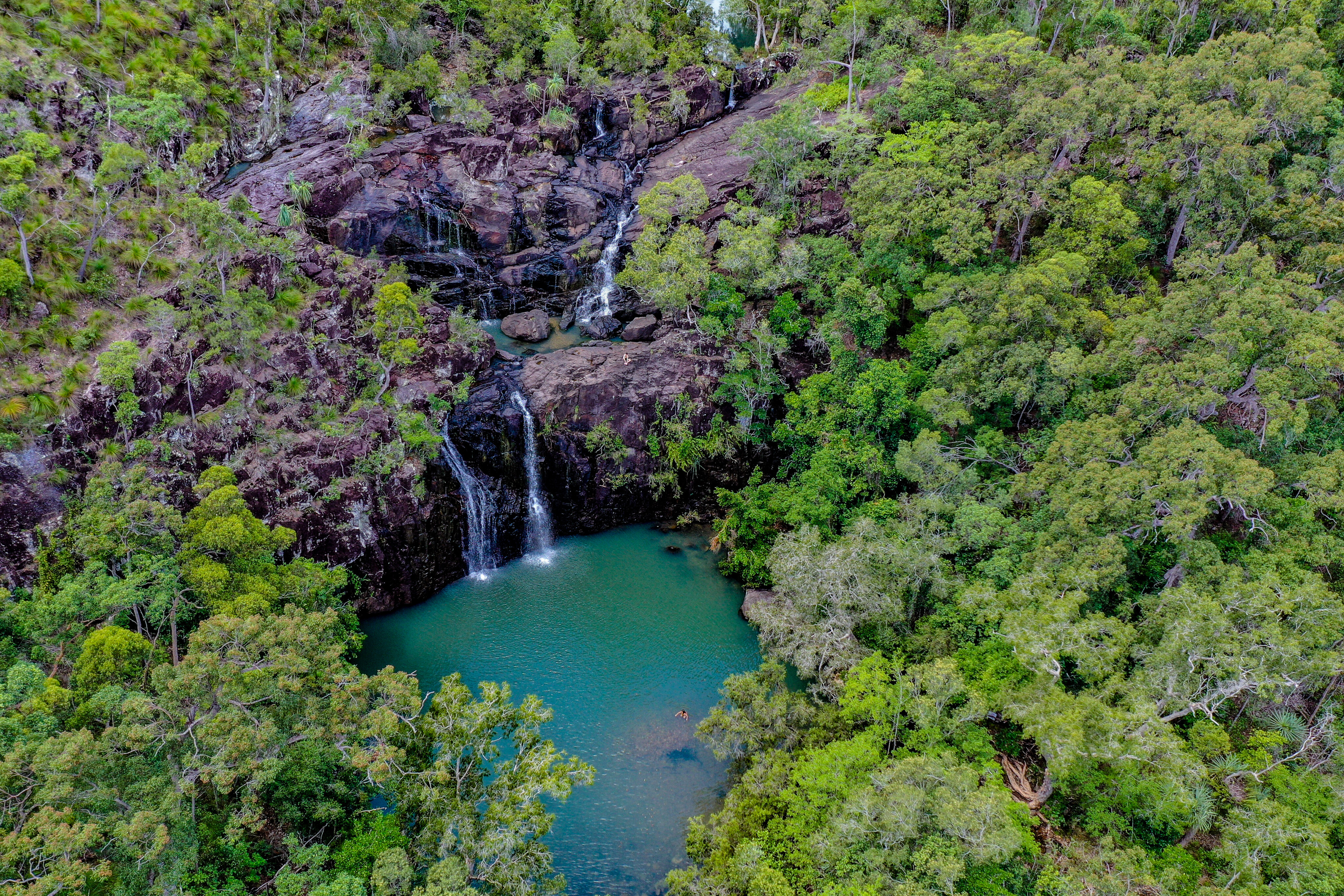
The Whitsunday Islands
The Whitsunday Islands are a popular destination for tourists from all over the world, and for good reason.
With crystal-clear waters, stunning beaches, and a wide range of marine life, the islands offer a unique and unforgettable experience.
Most of these islands are uninhabited national parks, however, several islands offer a variety of resort accommodations or back-to-basics camping, all with the fringing Great Barrier Reef at their doorstep.
Overnight sailing trips are a popular way to explore the Whitsunday Islands, many of which include stops at different islands. Guided overnight sailing trips are a fantastic way to meet new friends and have more time exploring this aquatic playground.
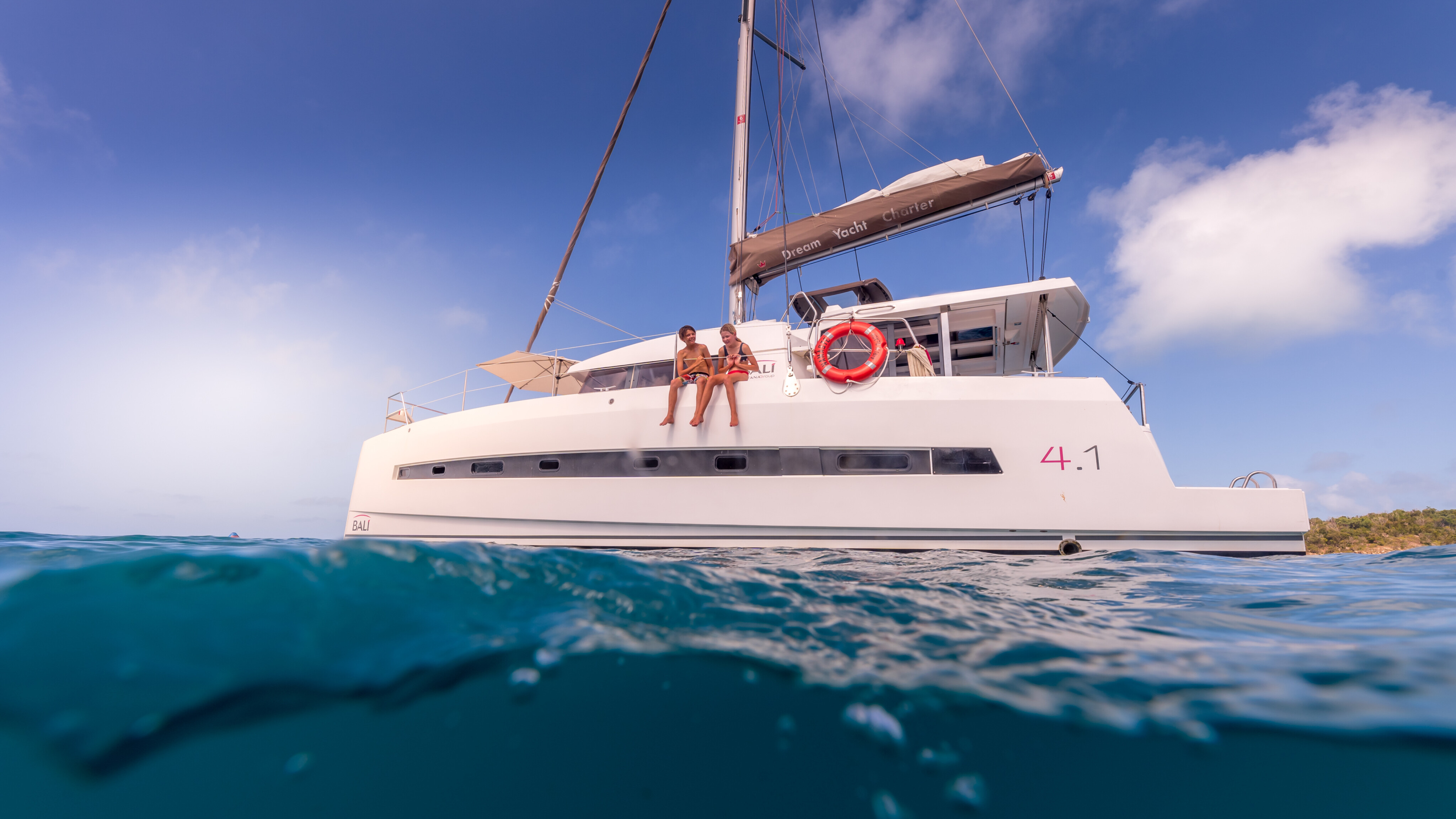
Whitehaven Beach
The 7km long Whitehaven Beach is one of the most popular tourist attractions in The Whitsundays, and famous for its pristine white sand.
Several day and overnight tours are available that take you to Whitehaven Beach and the surrounding areas.
Most tours include a stop at Hill Inlet Lookout, which offers stunning panoramic views of the inlet's iconic swirling sands and turquoise waters. The tour guides are knowledgeable about the area and provide fascinating insights into the region's geology, flora, and fauna.

Mackay Isaac Region: Reef to Rainforest
There are few better ways to spend four days in North Queensland than this reef to rainforest journey.
Kicking off at Airlie Beach, you’ll experience everything from your own private beach swimming spot, to viewing one of Australia’s most iconic animals – the platypus – in pristine Eungella National Park.
Airlie Beach, in the north of the Mackay Isaac Region, is known as the gateway to the Great Barrier Reef and Whitsunday Islands. Here, you can jump on board a boat to explore The Whitsunday Islands.
Returning to the mainland, head south to Cape Hillsborough National Park, where you can explore the beach of the same name before dossing down for the night at Cape Hillsborough Nature Tourist Park.
Be sure to wake up early the next morning to enjoy this tourist park’s famous Sunrise with Wallabies experience, before tackling more of the beach’s walks and lookouts.
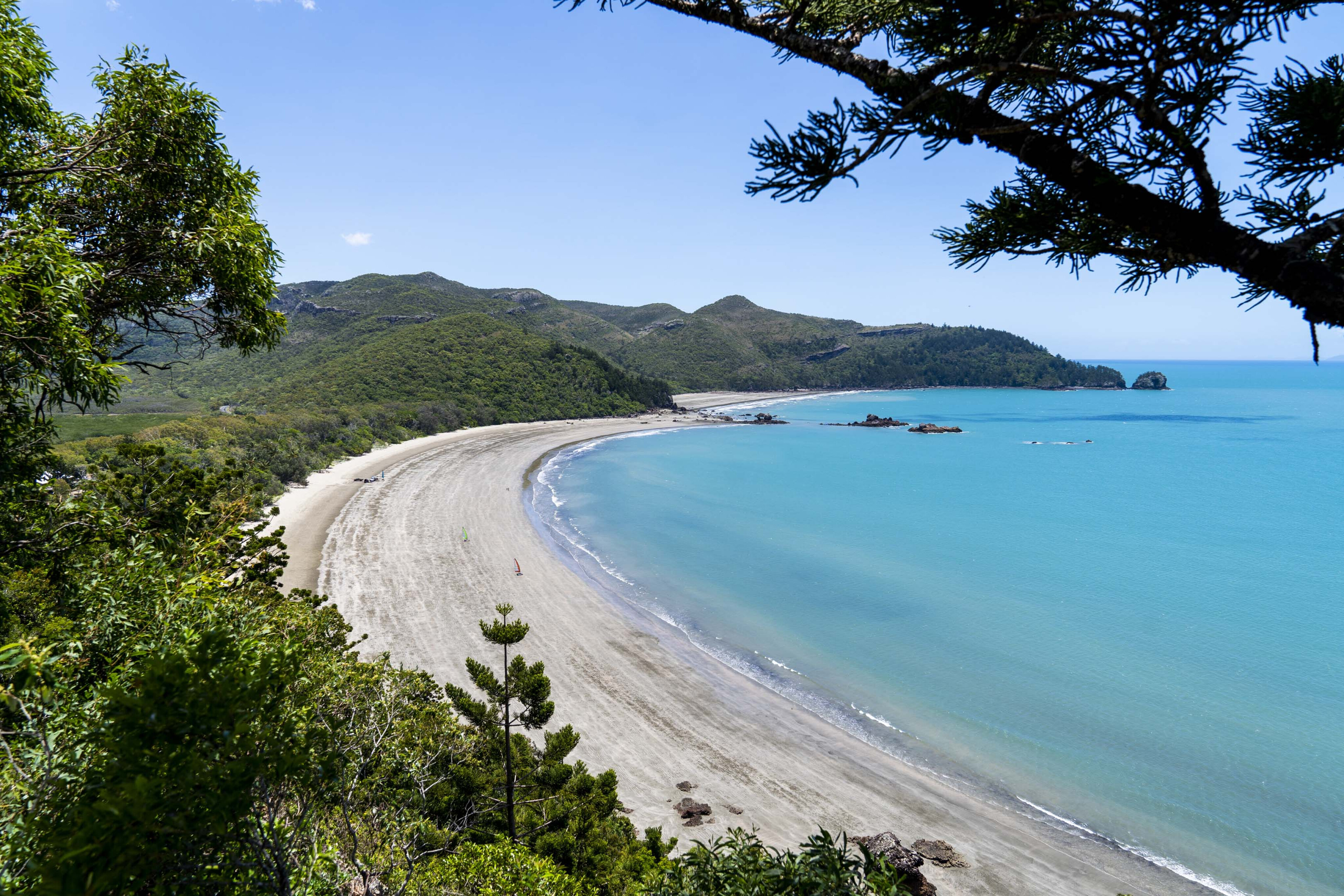
Cape Hillsborough National Park is well worth a day or two of exploration, with its rocky peaks the result of an ancient volcanic eruption, which has resulted in the visually spectacular strata visitors can see on some of the park’s hills.
The park’s day-use area allows for beachside walks and exploration, as well as the chance to scramble over some of the park’s coastal rock formations.
For that ultimate beach-side campsite, this park delivers, too; set up your tent at pretty Smalleys Beach camping area and you are, literally, right near the shoreline of the park, where it abuts the waters of the Great Barrier Reef Marine Park. You need to book online for a site here, but for those after a more remote, wild, overnight experience, this is a no-brainer.
Short walks in the park include the brilliant ascent to the top of Andrews Point, with all-encompassing views of the rainforest, beaches and ocean below. It’s steep, but worth the effort. Other easier walks include the Beachcomber Cove Track, and the Yuibera Plant Trail, which educates you about the original inhabitants – the Yuibera people – and their ever-lasting connection to this land.

Leaving Cape Hillsborough, you will continue south, toward Mackay – but with one short (or longer) stop-over: if you’re a keen angler, you’ll want to stop at the net-free Seaforth Beach along the way. With luck, a barramundi or two awaits.
Upon reaching Mackay, nestled beside the Pioneer River, be sure to take some time to explore this city. You can swim at Bluewater Lagoon, or follow the Bluewater Trail’s raised boardwalk through pristine river wetlands to the Mackay Regional Botanic Gardens. For those after a beachside experience, nearby Lamberts Beach is the go, with its patrolled beach and children’s playground.
Once you’ve explored Mackay’s (and sampled some top nosh at one of the riverside cafes), it is time to turn inland and head to Eungella National Park. Part of your journey to Eungella National Park will take you through the picturesque Pioneer Valley. For fans of waterfalls and rugged volcanic landscapes, this valley delivers. It is also great for swimming (Platypus Beach is a must).
Eungella National Park is regarded as a true outdoor playground, thanks to its 20km of walking tracks, and fantastic swimming at the Finch Hatton Gorge.
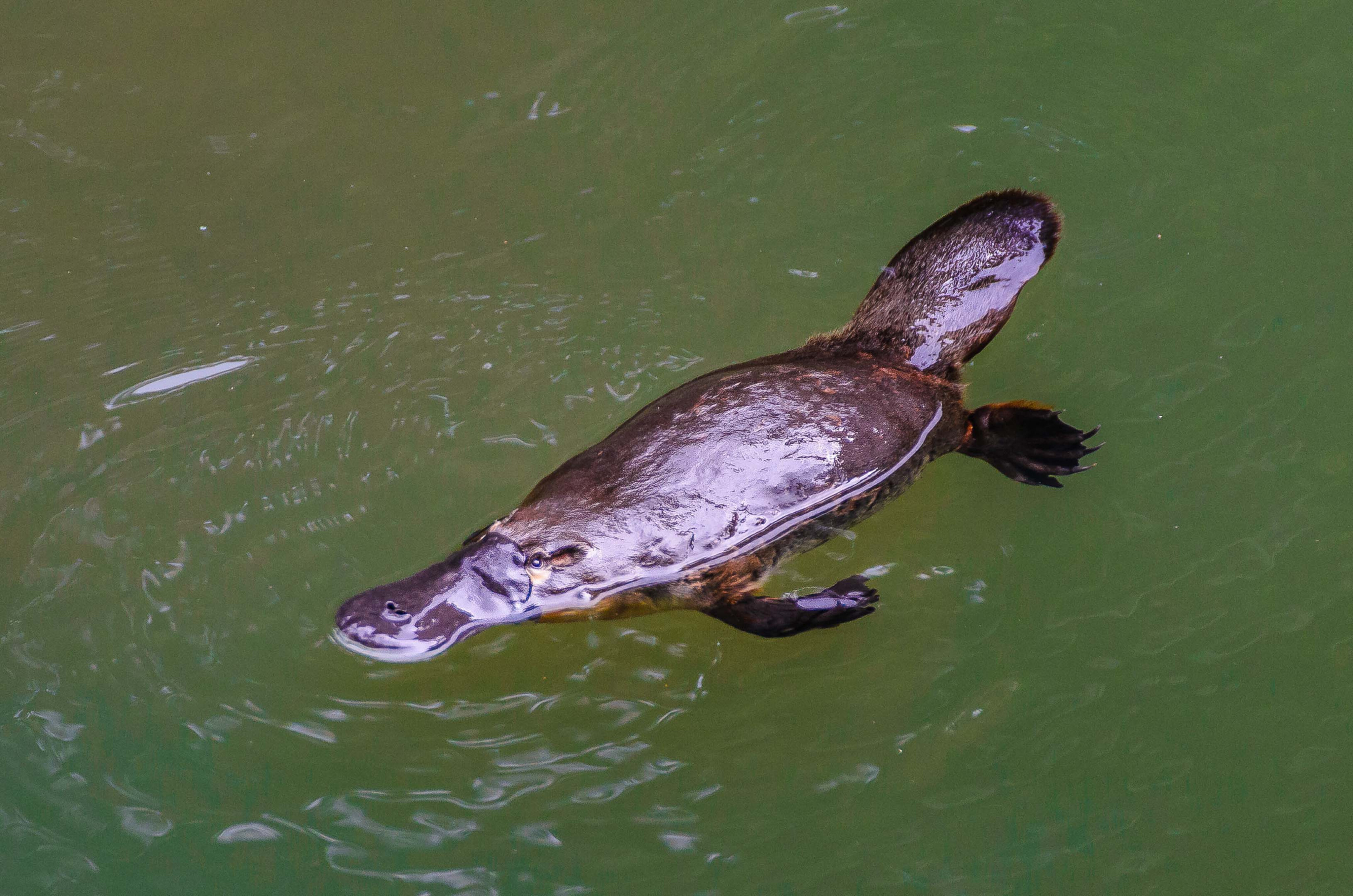
Lovers of flora and fauna are spoilt here; more than 800 plant species are found in the park and, if you’re lucky, you may spot the reclusive platypus in Broken River. Yep, it’s not a bad way to finish a four-day reef to rainforest adventure…
For more, see drivenorthqueensland.com.au [↗]
Top 5 4x4 road trip trips
1. Service and education
Before heading out on any road-trip, no matter how close to home or otherwise, get your vehicle serviced beforehand. Your mechanic will pick up any potential issues and advise you on any spare parts you should take or any essential modifications (such as new suspension, additional lighting or frontal protection) that may be needed to ensure your 4WD (and yourself) completes the trip safely.
In addition to making sure your 4WD is up to that big road trip, be sure you, as the driver, are as well. Attending a 4WD driver training course is a must; you will learn how capable your particular vehicle is and be far more confident in both its – and your own – capabilities when exploring remote areas. Topics usually covered include how to perform a vehicle recovery, water crossings, how to safely negotiate steep terrain, drive in sand, and more.
2. Tyres
For off-road travel (dirt roads, fire tracks, etc.), we’d advise – at a minimum fitting All Terrain tyres of Light Truck (LT) construction to your 4WD. If the route you’re contemplating is particularly rugged, go for LT Mud Terrain tyres. Tyres of Light Truck construction feature a thicker and more aggressive (read: grippier) tread pattern than the highway terrain tyres that are standard fitment on most new 4WDs these days.
LT construction tyres will also include a stronger sidewall, which increases resistance to staking or puncturing – especially pertinent when travelling off-road and having to lower tyre pressures. Speaking of which…
3. Air up, air down
A four-wheel drive vehicle can take you to some spectacular remote parts of Australia, via some often rough, and/or sandy, tracks. For optimum traction (and safety), you will need to learn to adjust tyre pressures to suit different terrain.
When driving on sand, for example, by lowering your tyre pressures, you subsequently increase the tyre’s ‘footprint’, i.e., more of the tyre is in contact with the sand, which enhances traction in these types of loose surfaces. A similar process applies for rocky terrain; lowering tyre pressures so that your tyre ‘folds over’ the rock, means the rock has less chance of puncturing the tyre, as it has conformed to the shape of the rock, rather than being too highly inflated and thus forcing the rock into the tyre, causing a puncture.
Oh, and remember to pack a portable air compressor. You will need this to re-inflate your tyres to safe pressures once you are back on sealed roads.
4. Pack properly, pack safely
It is all too tempting to just throw all your camping gear, luggage, recovery equipment, water containers and other road-trip paraphernalia into the back of your 4WD and then drive off – but please don’t. In the unfortunate case of an accident, any unsecured luggage or gear transforms into a potentially deadly missile for vehicle occupants.
By strapping down all your gear with ratchet straps (or ropes), you will ensure that everything stays still and secure in the back, while you and your fellow occupants stay safe up front.
5. Safety first
Before you head off on your big adventure, leave a rough timeline or itinerary with family and/or friends. Make sure you pack reliable communications as well, whether that is a UHF radio or a satellite phone; a mobile phone will not have a signal in most remote (and even not so remote) parts of Australia. If you don’t own a sat-phone, hire one – they are the most reliable form of remote area communications.
If you’re travelling with more than one vehicle, adhere to ‘convoy procedure’ which is, in a nutshell, where you always maintain visual contact with the vehicle behind you – especially if turning onto another road. And don’t crowd yourself and the other vehicle, either; keep at least a 100m gap between each to avoid rocks hitting the windscreen or dust kicked up from the vehicle in front obscuring your forward vision.

COMMENTS